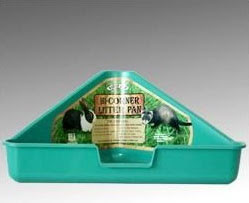By: William F. Gabriel

Rabbits are fine creatures to have as pets. Any loving pet owner would want to provide for the animals’ basic needs. Aside from food, drink, and shelter, rabbits need to exercise too. Otherwise their muscles atrophy and they lose energy and immune system strength. In the end, exercise can only do good for your pet bunnies. But how do you let them get their exercise? You can’t exactly leave them in the open to frolic as they wish – they might get hurt! That is why we have rabbit runs!
Rabbit runs are large enclosures for rabbits. Unlike hutches or cages, these have open bottoms, such that the ground is open. It does have walls and a roof to keep the rabbits from getting out or predators from getting in. After all, just because they are your pets does not mean that the rabbits’ natural predators, like foxes, will stay away.
These structures provide several advantages over the standard rabbit cage or hutch, but they also have some weaknesses. Note for example that the lack of a bottom means that the unit cannot be lifted up with the rabbit inside. Additionally, the lack of a floor suspended above the floor means that feces and urine are in easy reach, making hygiene a bit of a problem.
On the other hand, rabbit runs are wonderful additions. They give your rabbit the freedom to run and play in a spacious yet secured environment. The best place to use these runs is outdoors, on the grass. Your pets can enjoy the natural feeling of a grass surface while getting the sunshine, air, and exercise they need to stay healthy and happy.
Some runs are made to be collapsible, making them easy to store when not in use. This is because runs are not the best for keeping rabbits, and are at best used occasionally. If you want to keep your rabbit safe, then indoor cages or hutches are still the way to go. That way they are protected from harsh weather conditions as well as predators.
The construction of rabbit runs varies. At the very basic level, you can have a circle of wire mesh, staked into the ground and covered with some fine mesh. This is easy to make but is not easy to put away, nor does it provide much protection. You can buy or make wood-reinforced wire-enclosed runs, which provide good protection, but you might experience wood rot if you are not careful with it. Lastly, there are rabbit runs made of jointed metal cage panels. These make assembly simple and quick, and also afford you very good protection for your rabbits. Of course, prices will vary depending on the type and quality of the product you choose. Good accessories to include in these runs are drinking water bottles and shaded areas for cooling off.
A rabbit run is safe, cost-effective, and a great addition to any pet rabbit owner’s lineup. Choose one today, and give your pets the freedom to run and play in a protected environment!
About the author:William F. Gabriel is a Senior Marketing Manager on kitchen improvements. Through his articles, he gives practical tips on choosing the rabbit runs and rabbit run for your pet.



